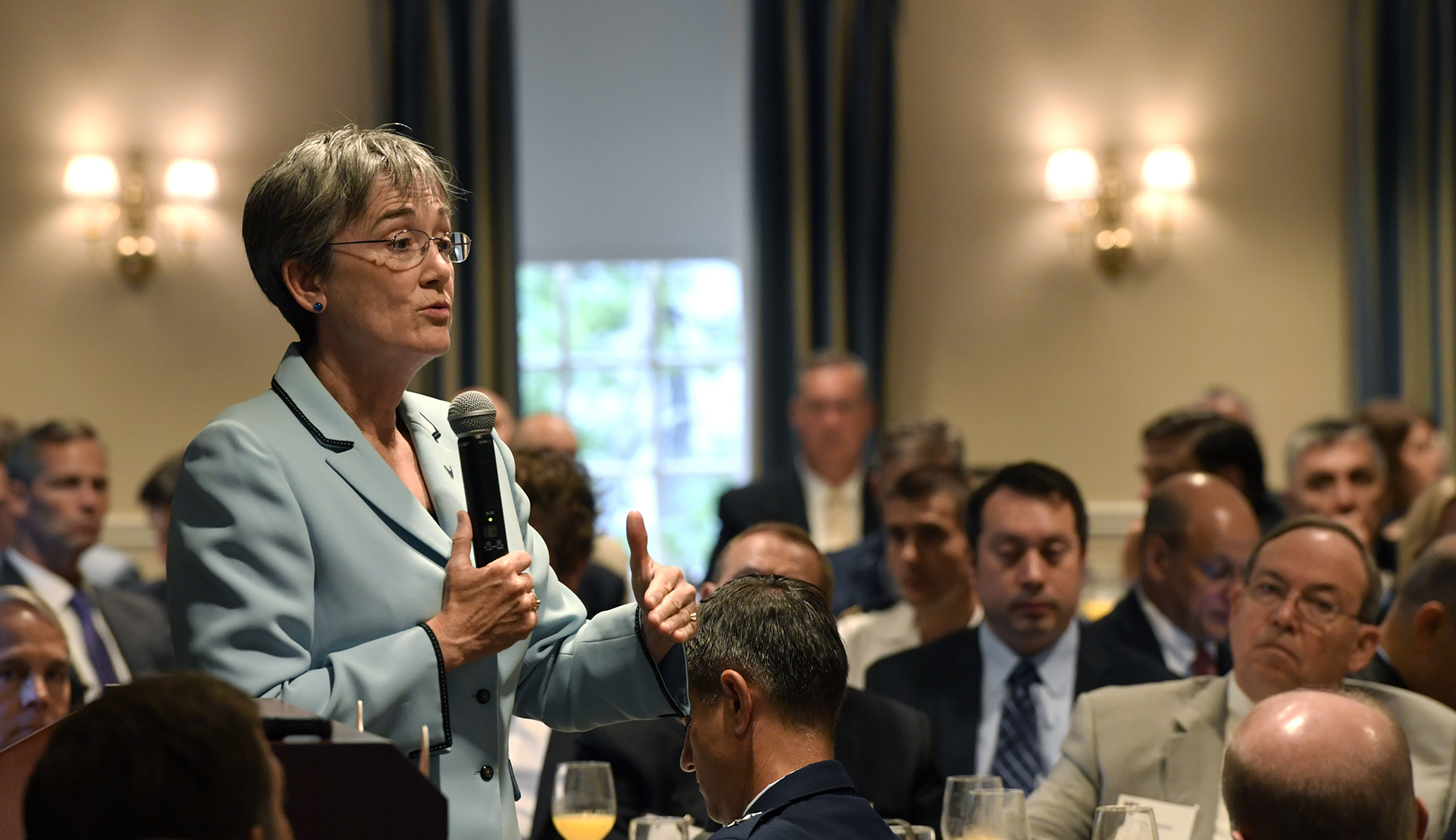Secretary of the Air Force Heather Wilson speaks about the fiscal year 2018 budget, the Aviation Bonus Program, and an upcoming Air Force fighter jet deployment to Europe during an Air Force Association breakfast event, June 5, 2017. Air Force photo by Wayne A. Clark.
In one of her first speeches since being confirmed as Secretary of the Air Force, Heather Wilson said the service must “go faster” in nearly every way—developing new technology, buying new equipment, and bringing on more people; especially pilots and maintainers.
Speaking to an industry-heavy audience at an AFA-sponsored, Air Force breakfast on Capitol Hill, Wilson discussed the 2018 budget request, saying it builds on the supplemental request for Fiscal 2017 to “arrest the readiness decline” and “begin? to restore readiness and increase the lethality of the force.”
Wilson noted that USAF has borne the burden of 70 percent of the missions being conducted against ISIS, and simply needs more people because the demands on USAF “are not going to go down.”
She warned that the Budget Control Act, still in effect, will “further hollow out the force” and would create a $15 billion shortfall versus the Fiscal 2018 budget request if not repealed. The Air Force “needs predictability” in its funding from Congress, she argued.
Toward filling “critical gaps” in the fighter pilot cadre, Wilson announced a “tiered” system of aviation career incentive pay, which will pay more to those flyers in greatest demand. There will also be new “flexibility in the length” of flying-personnel contracts, she said.
Pay alone won’t retain the pilots, however, and she said the new budget request provides for flying hours “at the maximum-executable levels … and near-maximum” for logistics. Readiness will go a long way toward retention because Wilson said she’d never visited a “focused and ready” unit with poor morale or low retention.
Speaking with reporters afterwards, Wilson said she’s daunted by the amount of modernization the service must do in a short space of time, and pledged her best efforts to “get things from concept to the warfighter faster,” although she acknowledged that “you can’t do everything that way,” especially big programs. Still, “you have to turn inside” the adversary’s ability to keep up, she said.
Wilson said the Air force has “no plans” for buying more F-22s. Lt. Gen. Arnold Bunch, top USAF uniformed acquisition official, told reporters that the service will soon send a report to Congress on the feasibility of a restart of the F-22 line, but that the service’s priority is the F-35.
Wilson and Bunch both said the Air Force wants to get more F-35s “as quickly as possible,” but that the 46 in the Fiscal 2018 base budget request were all that could be afforded with all of USAF’s other obligations. Both pointed to the 14 more F-35s mentioned in the service’s “Unfunded Priorities List” as indicating where the Air Force needs to go with the F-35 buy. While Bunch said the Air Force wants to see the F-35 price and sustainability cost continue to fall, “there’s not a line that we’ve drawn,” such that at a certain price or operating cost, USAF will boost its base-budget request for the fighter. Wilson said she’d like to “see what the [new] National Security Strategy says” before making further F-35 buy decisions.
Wilson reiterated remarks from chief of staff Gen. David Goldfein that the A-10 will remain in the USAF inventory “for the foreseeable future.” She said the “effort to mothball the A-10 was driven by budget, not strategy or need. Everyone was aware of that. We’re trying to make a shift to a force structure that is driven by threat and strategy.”
